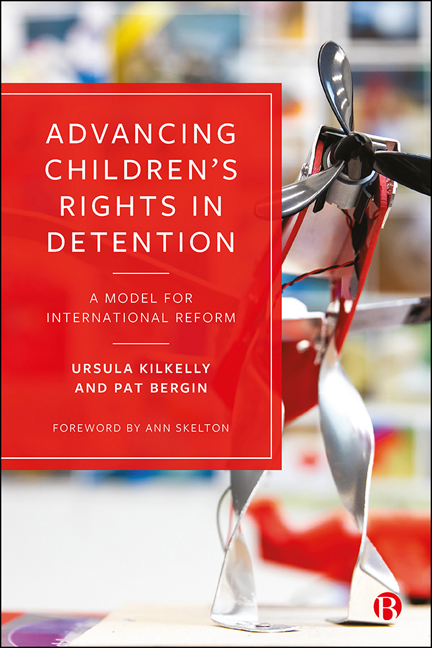Book contents
- Frontmatter
- Contents
- List of Cases and Instruments
- List of Figures
- About the Authors
- Acknowledgements
- Foreword
- Introduction
- 1 Children’s Rights in Detention
- 2 An International Perspective
- 3 Irish Youth Justice Law and Policy
- 4 Introducing Child Detention in Ireland
- 5 Oberstown and the Process of Change
- 6 Implementing Children’s Rights in Detention
- 7 Children’s Rights to Protection from Harm
- 8 Staff Wellbeing and Communication
- 9 International and National Influences and Advocacy
- 10 Reflections: Enablers and Barriers to Reform
- Afterword
- References
- Index
4 - Introducing Child Detention in Ireland
Published online by Cambridge University Press: 13 May 2022
- Frontmatter
- Contents
- List of Cases and Instruments
- List of Figures
- About the Authors
- Acknowledgements
- Foreword
- Introduction
- 1 Children’s Rights in Detention
- 2 An International Perspective
- 3 Irish Youth Justice Law and Policy
- 4 Introducing Child Detention in Ireland
- 5 Oberstown and the Process of Change
- 6 Implementing Children’s Rights in Detention
- 7 Children’s Rights to Protection from Harm
- 8 Staff Wellbeing and Communication
- 9 International and National Influences and Advocacy
- 10 Reflections: Enablers and Barriers to Reform
- Afterword
- References
- Index
Summary
Introduction
Having traced the development of Irish youth justice law and policy in Chapter 3, this chapter focuses more specifically on child detention, providing an historical and then a more contemporary point of reference for the reforms outlined in the rest of the book. Ireland has a long tradition of over-reliance on institutional care and, throughout the 20th century, children in industrial and reformatory schools suffered harsh and often abusive conditions (O’Sullivan and O’Donnell, 2012). Although the separation of children from adult prisoners took place as early as 1906 (Osborough, 1975), it was not until 1985 that proposals were made in the Whitaker Report (Commission of Inquiry into the Penal System, 1985) for a more enlightened model of detention for children, in small residential settings, with qualified and skilled staff (Sargent, 2016). In effect, however, rights-based reform of child detention took decades to achieve and required the adoption of a range of legal and administrative measures, including legislative reform, clear national policy and significant capital investment. The first part of this chapter sets out the role that these measures played in enabling the reform of child detention in Ireland. The second part introduces the current legal framework and governance arrangements for Oberstown Children Detention Campus, the national child detention facility in Ireland, while it also introduces the particular circumstances of the children who are detained there. In these respects, it provides important context for the deeper analysis that takes place in the chapters that follow.
The reform of child detention in Ireland
Contemporary reform of child detention in Ireland began with the introduction of the Children Act 2001, which introduced a new category of ‘children detention schools’, under the remit of the Department of Education, which detained girls and boys under 16 years of age in conflict with the law. Taken together, Trinity House School (1983), Oberstown Boys’ School (1991) and Oberstown Girls’ School (1991), all in Lusk, County Dublin, and Finglas Child and Adolescent Centre, nearer Dublin, could accommodate approximately 77 children (IYJS, 2008a). St Joseph's Clonmel (a former industrial school) could accommodate a further 40 children. The schools provided residential care, education and assessment services and they had varying levels of security (Kilkelly, 2006).
- Type
- Chapter
- Information
- Advancing Children's Rights in DetentionA Model for International Reform, pp. 50 - 67Publisher: Bristol University PressPrint publication year: 2021



